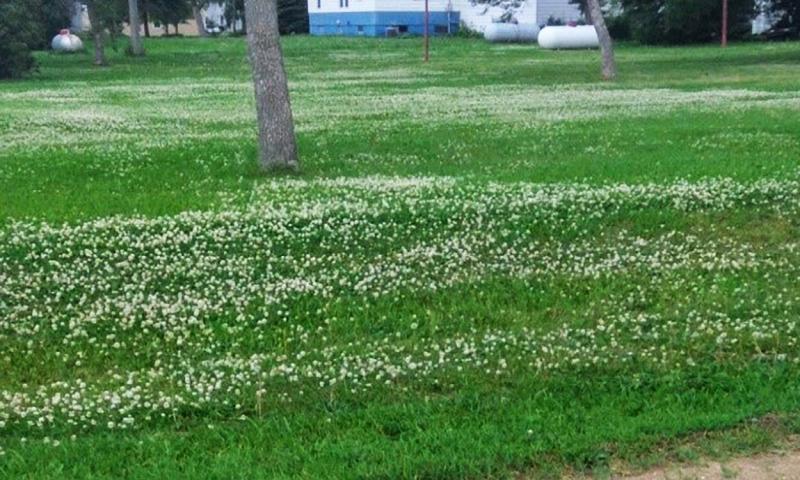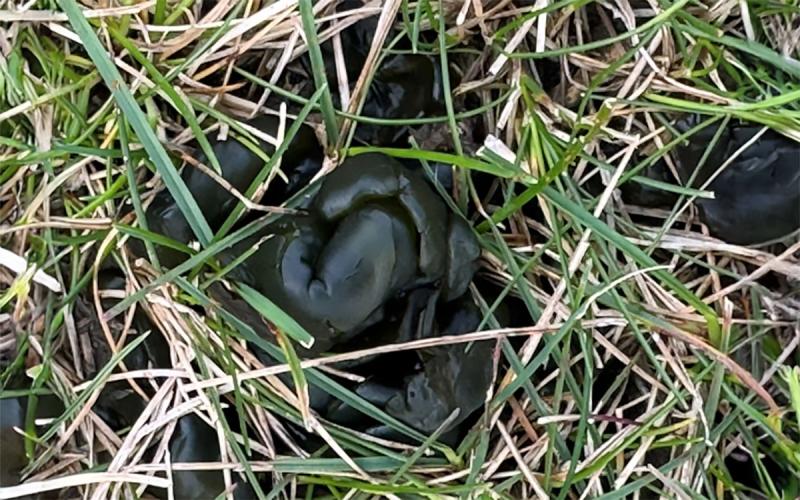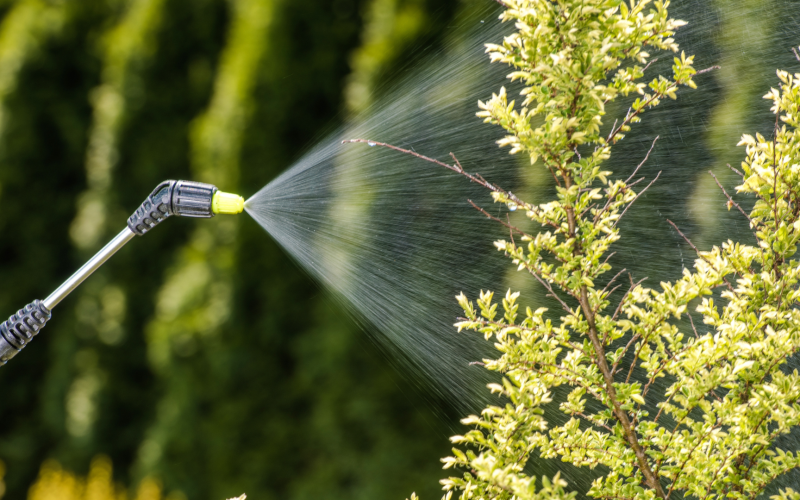Written by Vaughn Reints, SDSU Extension Horticulture Assistant, under the direction, contribution, and review of Amanda Bachmann, Robin Buterbaugh, and Prairey Walkling.
Bee lawns are making waves as a sustainable alternative to traditional grass lawns, which are often ecological deserts that provide little benefit to our essential pollinators (Figure 1). Unlike these monocultures, bee lawns integrate a variety of low-growing perennials and fine fescues that not only require minimal maintenance, but also actively support local wildlife, particularly bees (Figure 2).
Understanding Bee Lawns

Bee lawns combine grass with flowering plants, such as Dutch white clover (Trifolium repens), self-heal (Prunella vulgaris), and creeping thyme (Thymus praecox ssp. arcticus; formerly Thymus serpyllum). These plants are chosen for their resilience to mowing and their ability to coexist with turfgrasses. They provide essential nectar and pollen to bees, bloom throughout the growing season, and transform lawns into vibrant ecosystems. There are a wide variety of commercial seed mixes available, or you can create your own mix by selecting seeds for the plants that you want.
The Benefits
In addition to supporting biodiversity, bee lawns offer practical benefits. They require less watering and fertilizing than traditional lawns, reducing both cost and labor. Furthermore, plants like Dutch white clover, a staple in bee lawn mixes, fix their own nitrogen, which improves soil health and reduces the need for additional fertilizers.
How to Plant and Maintain a Bee Lawn
Location & Soil Prep
Determine if overseeding or complete renovation is necessary based on existing plant life and growing conditions.
- Overseeding: Overseeding works best if the lawn is healthy with few weeds. Before overseeding, temporarily set back the existing turf to allow new seed to grow. This may require mowing the lawn very short and potentially aerating or power raking to ensure the seed gets good contact with the soil.
- Renovation: Renovation requires more work and should be used if the lawn contains mostly “bad” weeds that are not good for pollinators; if it has many bare spots; or if it is uneven, compacted, or has grading issues. Renovation requires the removal of all existing plants. Methods include solarization, physical removal (sod cutter or tillage), or using herbicides.
Choosing Seeds
Opt for a seed mix suitable for your climate, including fine fescues and flowering plants that thrive under mowing conditions, are easily established, and attract bees. Commercial bee lawn mixes may recommend 4 to 7 pounds of seed per 1000 square feet with up to seven plant species on prepared bare soil. Knowing your existing turfgrasses will help determine which grass seed to add to the mix when overseeding, enhancing biodiversity and resiliency.
Sowing
Plant your seeds in early autumn or late spring. Use a broadcast spreader for even distribution, and lightly rake the seeds into the soil. An example of seeding rates can be found in the chart below (Table 1).
Watering
Keep the soil moist initially to encourage germination. Once established, bee lawns typically require less watering.
Mowing
Maintain a higher mow setting to allow flowers to bloom. Mow every three to four weeks, ideally when fewer flowers are present.
Maintenance
Minimize fertilizer use and avoid broad-spectrum herbicides. Organic fertilizers can be used sparingly to support plant health. Pre-emergent herbicides should be avoided, as they would prevent germination of desirable plants. Always read the label before applying herbicides and fertilizers and observe their suggested safety practices.
| Seeding Mix Component | Overseeding Rate (oz/1000 sq ft) | Renovating Rate (oz/1000 sq ft) |
|---|---|---|
| Dutch White Clover |
|
|
| Self-Heal |
|
|
| Creeping Thyme |
|
|
| Fine Fescue (optional, lbs) |
|
|
Living With Bee Lawns

Concerns about bee stings are common, but the bees attracted to these lawns are generally non-aggressive and more interested in plants than people. Bumble bees are frequent visitors to clover and will sting if stepped on. Wearing shoes while on a lawn with clover is an easy way to prevent these stings. Bee lawns are more than just an aesthetic choice; they represent a commitment to ecological gardening and sustainability. By converting a traditional lawn into a bee lawn, homeowners can enjoy a beautiful, lively garden that plays a critical role in supporting local ecosystems.
References and Resources
- Bee Lawns-What's the Buzz?, North Dakota State University.
- Planting and maintaining a bee lawn, University of Minnesota Extension
- Spring Lawn Care, SDSU Extension.
- Lawn Weed Care, SDSU Extension.


